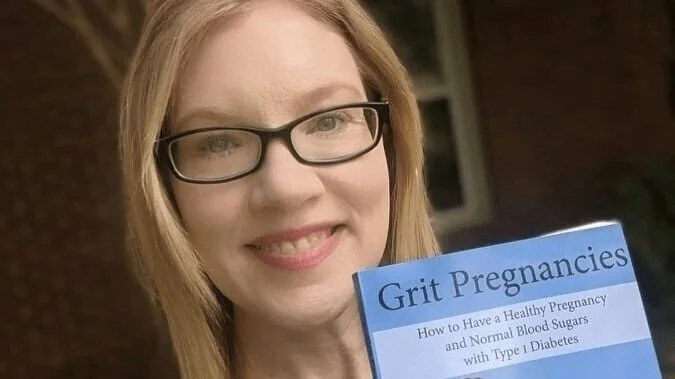Insulin mistakes are common, although rarely discussed in the open. Our stories are shared in private facebook groups and "safe” discussions only.
Oftentimes, people accidentally switch basal and bolus insulins (ie: Instead of taking long-acting insulin, they accidentally inject a large dose of rapid-acting insulin in its place), or they inadvertently inject a second dose of insulin (forgetting they already took the scheduled dose) and end up doubling their active insulin.
For many of us, these mistakes are easy to make when we're injecting 5-10x per day. That's 5-10 possible chances for dangerous mistakes. Per Day. Everyday.
I'm not immune to it. I've made insulin mistakes, too, and I honestly feel lucky to be alive.
That's why I need to talk about this important issue and find out how often it happens, the severity of these insulin mistakes and what we can do to minimize these mistakes in the future.
Last month, I compiled a non-scientific survey and opened it up to the diabetes community. The results were surprising. Out of 363 responses total:
Survey Demographics
Have You Accidentally Switched Insulins?
Have you accidentally given a second-dose of insulin after forgetting the first?
When Did these Insulin Mistakes Happen and Did They Require Assistance?
The great majority of these accidents reportedly happened with insulin doses before bedtime or overnight (combined total of 60.4%) but thankfully, most did NOT require assistance of another person or medical professional (85.6%).
This leaves 14.4% of respondents that DID need assistance from medical professionals or another person because of hypoglycemia that occurred due to the insulin mistake. This category includes needing assistance getting glucose, needing assistance with a glucagon injection and/or needing assistance calling emergency services/ambulance/hospital.
This is the category that's so scary.
14% of these respondents could not help themselves. This type of serious hypoglycemic episode could easily have lead to coma and death if no one was available to assist.
What techniques and tools can we use to avoid these potentially fatal insulin mistakes?
Thankfully, the hive mind had many tricks that they've employed since experiencing these mistakes in order to avoid them in the future.
Suggestions were:
Avoid all distractions when preparing and injecting insulin
2-person verification of all doses
Keep a detailed log. Record your dose in an app or write it down immediately
Use one insulin in a vial with syringes, and the other in a pen format to avoid mix-ups
Keep basal and bolus insulins in different locations (refrigerator vs. counter, bathroom vs. diabetes supply bag, etc.)
Keep basal and bolus insulins in different containers/packs (one blue, one red, for example)
Use colorful tape, band, mark , or top (like Insul-Cap) on the vials/pens to distinguish them
Pre-fill syringes and leave them in refrigerator, counter or in a syringe case so you can verify if a dose has been given
Use an electronic Insulin pen caps with time display and/or automatic app upload such as Timesulin, Clipsulin, and the even more advanced, Insulclock in Europe
Switch to a reusable SmartPen that records insulin doses and uploads data to an app automatically, such as InPen, NovoPen 6 & NovoPen Echo Plus (just released this quarter) and Pendiq & Esysta internationally
Use an insulin pump that shows your existing active insulin to confirm if a dose has been given
In the wise words of the survey respondents:
“When one person draws up {a dose}, another person always verifies. Dosage type and amount is checked. We have caught several mistakes this way - giving 3 instead of 2, etc. Having another person verify the dose allows us to fix mistakes before they happen. Using Sugarmate also helps us make sure we don’t double dose.”
“We need two shots of basal a day, so we keep two syringes in refrigerator per day, along with the basal insulin and use these only for basal dosing. if the syringe is missing, basal is given.”
“My Novorapid lives in a small, soft, red and white striped toiletry bag which I take everywhere with me (the red bag also contains spare needles, glucometer, lancet, strips and tube of glucose tablets). The red stands out on the kitchen bench when I am at home. It also helps my family find it, if needed. The basal pen stays in the black case that it came with, on my bedside cupboard. It stays at home unless I am out for dinner or away. I generally take it in the bedroom.”
“Needle count: For my bolus pen I put 2 new pen needles inside the case each day and discard them together in the evening. This means I just leave the morning needle in the case after that dose (put little white cap on needle) alongside the unused one. I find this works brilliantly. If at any time I am unsure if I took my bonus dose I can just have a quick look at the needles to find the answer.”
“I have to keep myself organized and dose in my bedroom with no disruptions. I don't permit anyone to interfere with the 5 mins I need to test, inject, and log so I don't forget. I also set alarms to test every 3 hrs. Different ring tones are for testing & injections or just testing.”
“One strict rule I follow is when injecting insulin I don’t talk to anyone. If I am in a conversation, I stop talking, double check the pen, double check the number of units, inject, and then continue with the conversation.”
For our own safety and the safety of those we love, We MUST talk about these common insulin mistakes and employ techniques to prevent them from happening in the future.
Several studies have been done regarding the prevalence of insulin errors, but they are inaccessible to the public because they are paid access only:
https://www.diabetesresearchclinicalpractice.com/article/0168-8227(88)90011-3/pdf (paywall)
The following study can be accessed if you first add the Chrome extension Unpaywall (free and legal. Click the link for more info.)
Have you experienced an insulin mistake such as the ones listed above? Please share your story in the comments below. It's only through talking about this issue that we raise awareness. Thank you.







